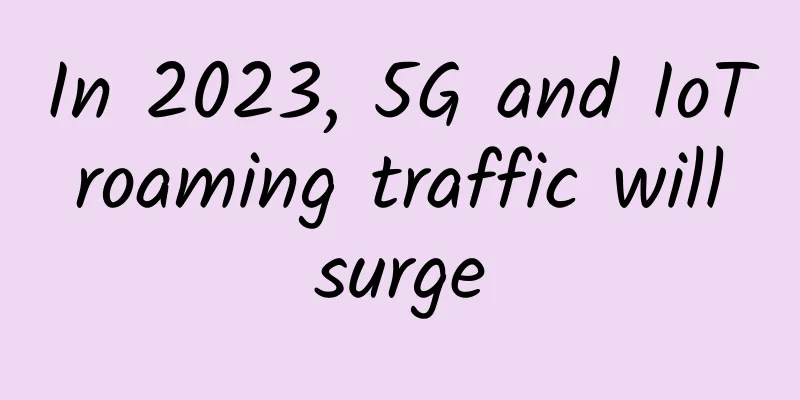In 2023, 5G and IoT roaming traffic will surge

|
According to data from international communications service provider BICS, the number of non-standalone 5G roaming users for consumer and Internet of Things (IoT) devices on its network increased by 156% year-on-year. BICS found that while the IoT is still in its infancy, the increase in robot rovers using 5G connections is an encouraging sign that the industry is finally picking up speed. Data shows that there will be about 176 million 5G roaming users in 2023, up from 68 million in 2022. Across all mobile technologies analysed, including 3G, 4G and 5G, the number of consumer devices such as smartphones, tablets and smartwatches used by roamers grows 37% from 608 million per year to 817 million in 2023. BICS added that the figures are in line with research from the United Nations Tourism Board, which suggests that international tourism is expected to return to pre-pandemic levels in 2024. BICS took a deeper look at the differences between consumer and IoT roamers on 5G connectivity, revealing a 15% increase in the number of consumer roamers. It added that other studies tracking sharp growth in 5G roaming users showed that data roaming activity and momentum for 5G roaming services were "surging". Citing a study by Kaleido Intelligence, it predicts that by 2024, non-standalone 5G roaming users will exceed 100 million, and overall consumer and IoT roaming data usage will grow 36% to 5,000 PB. BICS data also shows that the number of IoT devices roaming via 5G connections has grown significantly by 277%. Even the variety of 5G devices is growing, with a year-on-year growth of 47% by 2023. Ann Heyse, telecommunications solutions manager at BICS, said manufacturers face significant challenges in building 5G roaming-compatible IoT devices. That’s why most roaming devices seen on networks have historically been consumer phones. While the Internet of Things is still in its infancy, the increase in robot roamers using 5G connections is a very encouraging sign that the industry is finally picking up the pace. Heyse said that from Kaleido research, IoT roaming revenues are expected to grow 79% by 2024 compared to pre-2019 levels. This is largely due to the many good partnerships being formed between players big and small to help proliferate IoT devices for next-generation use cases. Mikael Schachne, Chief Operating Officer at BICS, said: “While 5G rollouts have been slower, the growth we are seeing on the network shows that the power and momentum behind non-standalone 5G is indeed building. “These figures make sense given that 5G roaming is now available in over 60 countries around the world, but it’s important to remember that this is non-standalone traffic built on 4G technology. Unlocking the full potential of 5G will come from greater investment in standalone 5G.” |
<<: China Unicom and Huawei jointly launch innovation to build differentiated advantages in 5G-A
>>: A brief talk about link aggregation, have you learned it?
Recommend
What is the value of developing smart education? 5G and AI play a key role
As the domestic prevention and control situation ...
Three pictures tell you the principles of Linux TCP/IP protocol stack
It is no exaggeration to say that today's Int...
The Ministry of Industry and Information Technology stated: Promote the development of dual-gigabit networks represented by 5G and optical fiber
China has made some achievements in 5G developmen...
RAKsmart: San Jose dedicated server from only $30/month, Korea/Hong Kong/Japan/US cluster servers, 1-10G bandwidth servers
RAKsmart is a foreign hosting company operated by...
5G is the new infrastructure, but it also faces practical problems
Labs Guide When we browse Moments and watch video...
Ministry of Industry and Information Technology: The number of cellular IoT terminal users of the three major operators is nearly 1.2 billion
According to the "Economic Operation of the ...
Discussing the five key technologies for building 5G
It is widely believed that 5G mobile networks wil...
Enterprise Switches and Selection Guide
An enterprise switch is a type of network switch ...
wikihost: 50 yuan/month Korean VPS-1GB/50GB/500GB (no shutdown after reaching the speed limit)
Wikihost, also known as Micro-base, was founded i...
With the accelerated development of 5G technology, what challenges does the data center face?
Memory security is not a new concept, but the sur...
Virtono: €8.97/year KVM-512MB/15GB/1TB/UK data center
Virtono is a foreign VPS hosting company founded ...
Communication protocol I2C subsystem Debug
There are two common I2C errors: I2C ACK error, I...
A 10,000-word article that explains computer networks with pictures!!!
[[383719]] The author has developed a simple, sta...
Digital China is moving towards a deeper and more practical digital economy.
"Vigorously develop the digital economy, imp...
AlphaVPS: 128GB-2TB large hard disk VPS annual payment starts from 15 euros
AlphaVPS is a Bulgarian hosting company registere...









